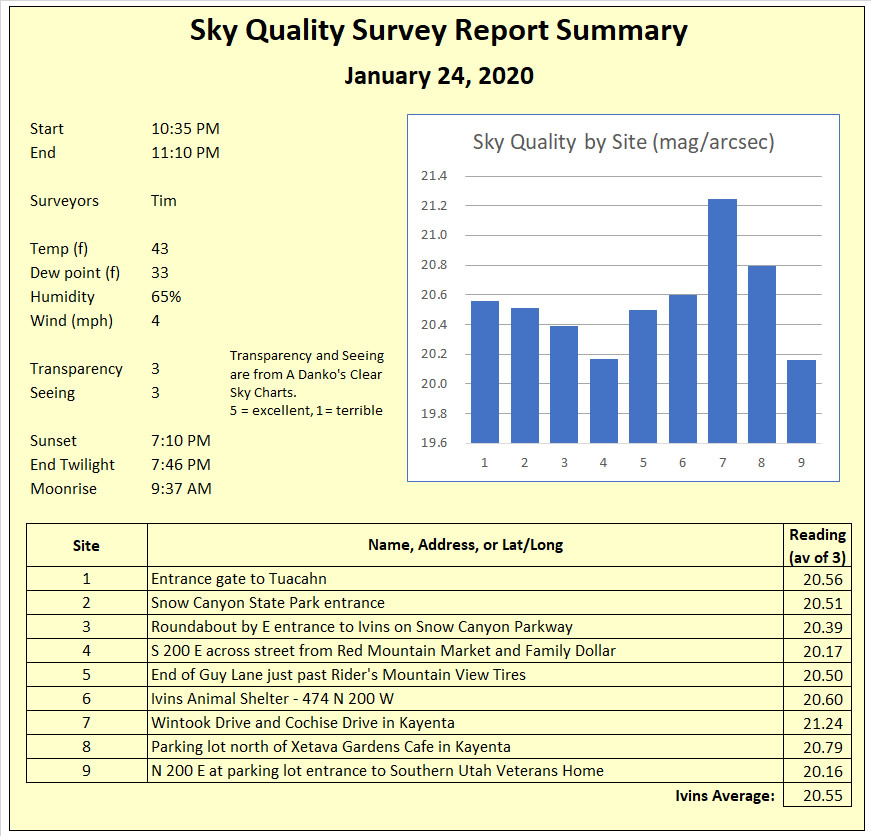Tim Povlick conducted our fifth comprehensive night sky survey in Ivins on January 24th at nine locations. These surveys compare the quality of our night sky at various locations. More importantly, the surveys will track the health of the night sky over time.
Is the quality of our night sky improving or deteriorating? General population growth will likely cause it to deteriorate. But implementing better lighting practices, putting light where it is needed for us on the ground rather than spreading it skyward, can slow or even reverse that deterioration.

The 20.55 average for Ivins indicates we can see about 3,000 stars with the naked eye. If readings drop to 19, we would only be able to see about 800 stars, at most. If it drops to 18, a common reading in many cities, we would only see about 400 stars. That could happen to us.
The report above shows the averages for nine locations in Ivins. Lower numbers mean a brighter sky, and the scale is logarithmic where 1 step (eg. 19 to 20) represents a brightness difference of 2.5 times.
That means the night sky above the Southern Utah Veterans Home (site 9) is more than twice as bight as the sky above the northwest area of Kayenta (site 7).
As you would expect, there is considerable variation in the darkness of the night sky across Ivins. The differences are due only to artificial lighting and not to any circumstances beyond our control. Yes, we are impacted by our neighbors, particularly St. George and Santa Clara. But this survey shows that a lot of the brightness in our night sky is generated right here in Ivins.
A growing population in Ivins and surrounding communities will push us in that direction. And adding poorly designed outdoor lighting will get us there faster. That takes a lot of awe and wonderment out of the sky, not much of a legacy to leave for future generations. On the flip side, if we could improve outdoor lighting, we might bring back some of the darker skies we used to have. Or at least protect what we have now. Don’t we owe that to our children, grandchildren, and future generations?
What if we could improve the quality of our night sky? A reading of 21.5 means we would be able to see more than 5,000 stars with the naked eye. Look up on the next clear night and try to imagine seeing those many stars instead of what we can see now.
If you would like to get involved in this or any other projects, let us know. Send us an email from the Contact us page.

Technical notes: We made measurements using the SQM-L Sky Quality Meter by Unihedron. This is a narrow cone, sensitive low-level light meter recommended by the International Dark Sky Association. It is Model No. _2.18, Serial No. 7914. We followed approved methodology, taking three readings at each site and averaged the results.
